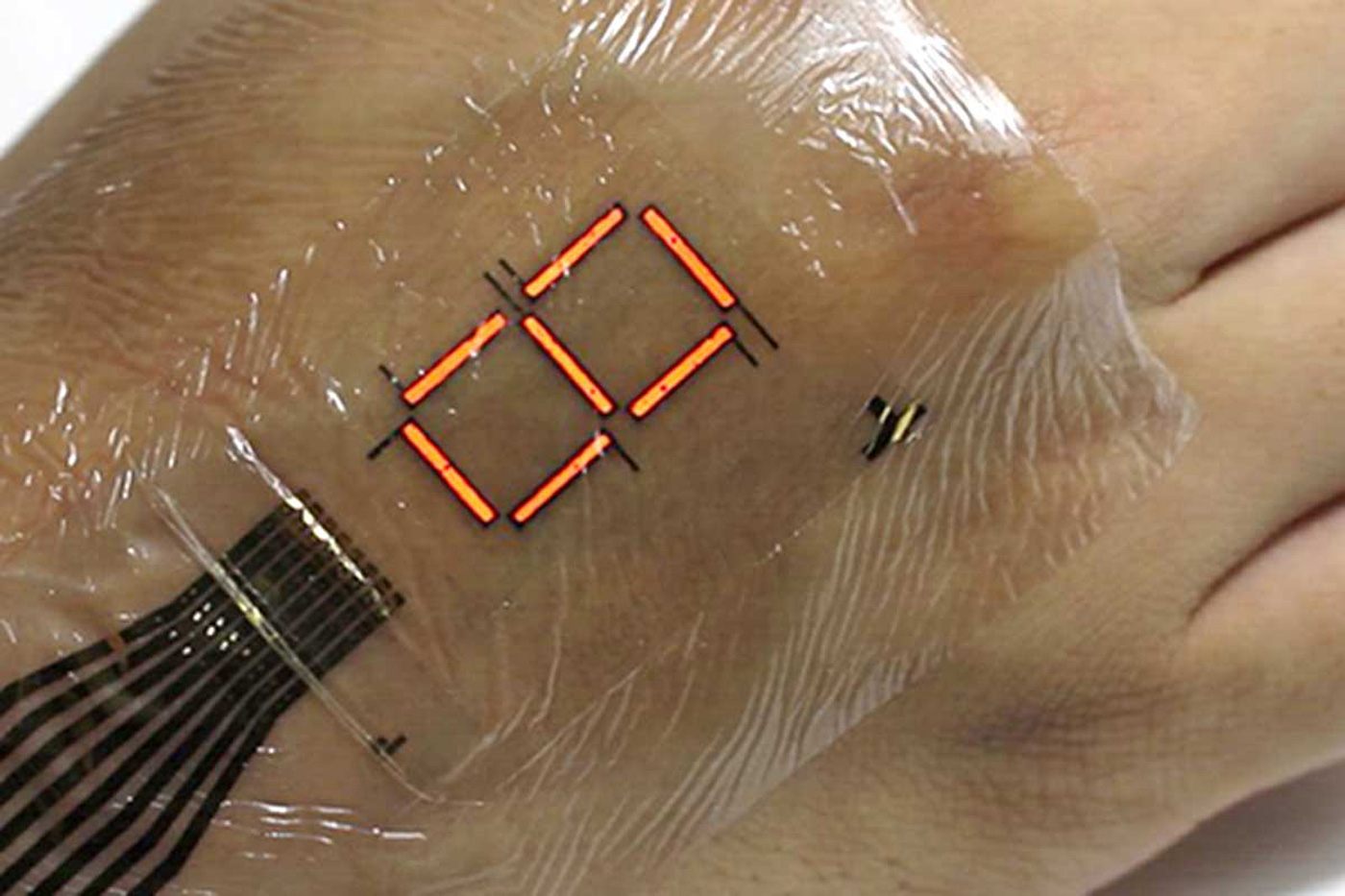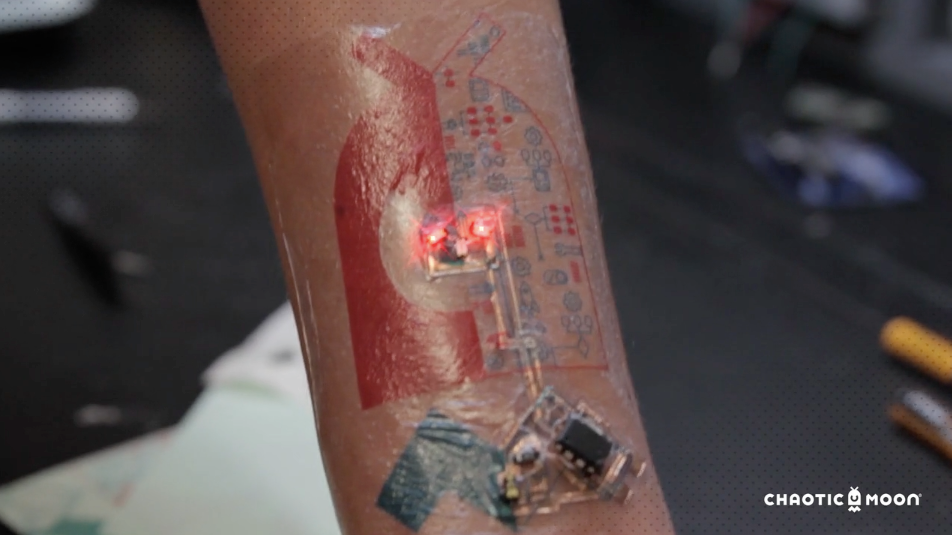Video: super slim display turns skin into screen
The wearable display must be very thin so that it can be fastened to the skin. Scientists from the University of Tokyo are working to solve this problem - they made an "electronic skin", a display with polymer LEDs just 3 micrometers thick. The device practically merges with the body, it works for several days and is strong enough not to break when the limb is bent.

Scientists from the University of Tokyo presented a prototype of the device "E-skin", "e-skin". This prototype after fixing on the arm shows the level of oxygen concentration in the blood. But the goal of scientists is to create such a gadget that will replace fitness trackers or medical devices like a blood glucose monitor.
The device is made of layers of silicon oxynitride and parylene, which is embedded in a thin flexible OLED-display.
')

This is not the first attempt to make a wearable diploma that would be mounted on the skin and would not interfere with the movement of a person. The main problem has always been flexibility. Enthusiasts tried to do temporary tattoos using conductive ink.


Scientists from the University of Tokyo presented a prototype of the device "E-skin", "e-skin". This prototype after fixing on the arm shows the level of oxygen concentration in the blood. But the goal of scientists is to create such a gadget that will replace fitness trackers or medical devices like a blood glucose monitor.
The device is made of layers of silicon oxynitride and parylene, which is embedded in a thin flexible OLED-display.
')

This is not the first attempt to make a wearable diploma that would be mounted on the skin and would not interfere with the movement of a person. The main problem has always been flexibility. Enthusiasts tried to do temporary tattoos using conductive ink.

Source: https://habr.com/ru/post/392993/
All Articles